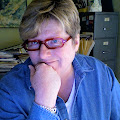WHEN I RECEIVED THE FOLLOWING RESPONSE TO my summer vacation posts (here and here), I just had to share it. It shows how an organization can take a really good idea and adapt it, and it further proves the point that really good ideas are scalable if people have the imagination to run with it.
Sally Roesch Wagner is the executive director of the Matilda Joslyn Gage Foundation in Fayetteville, NY. Gage was a formidable force for equal rights and Wagner is the visionary scholar who has brought Gage's work to life and life to the public. Here's Sally's approach to making stakeholder communication intentional:
Sally Roesch Wagner is the executive director of the Matilda Joslyn Gage Foundation in Fayetteville, NY. Gage was a formidable force for equal rights and Wagner is the visionary scholar who has brought Gage's work to life and life to the public. Here's Sally's approach to making stakeholder communication intentional:
I like the idea [of trustees porch conversations] so much that I'm going to propose we think about it as a strategy rather than an event -- that we (board, staff, volunteers, docents) all engage visitors at all of our events in a conversation about what they'd like to see us do, transparent talk about our finances, what we need, see what questions they have, etc. Then we have a process sheet for after, notes about what was learned. And then we expand it to outside our events, and develop it as a lifestyle.
Folks involved in the Foundation are already doing great outreach, talking to people all the time about the Foundation. What the "trustees porch conversations" idea does for me is to open the thought of doing this systematically as intentional conversations rather than ones that just develop. And we can build the intentionality based on the typical conversations folks have; what people want to know about us, etc. And then we can keep track of the conversations, which will help us with personal recruitment of volunteers, board and committee members.
AND as we develop dialogue as the language of the institution (as we're doing with a grant from the International Coalition of Sites of Conscience, setting up a train-the-trainers program so everyone involved gets trained in the process of dialogue eventually), we can in stages turn these casual conversations into meaningful dialogues which will involve the community in our work on a continual basis. Sort of a walking "write on our walls." And I think we can also literally adopt the trustee porch conversations at our Wonderful Weekends - our yearly gatherings.
Also I'm going to send out an email to the volunteers today encouraging a conversation about the language "I serve". I really like that language, too. Want to see what it feels like to them and if they buy into it.


Comments